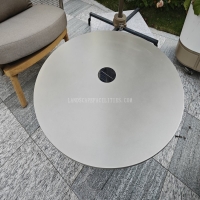Welcome to the website for landscape facilities products and knowledge.
What are the best practices for installing trash cans in areas prone to flooding?
Installing trash cans in flood-prone areas requires careful planning to prevent pollution, maintain hygiene, and ensure durability. Here are the best practices to follow:
1. Choose Elevated Locations – Place trash cans on raised platforms or elevated grounds to minimize contact with floodwaters. This prevents waste from being swept away and reduces contamination risks.
2. Use Waterproof and Durable Materials – Opt for trash bins made from corrosion-resistant materials like stainless steel, heavy-duty plastic, or coated metal. These materials withstand water exposure and last longer.
3. Secure the Trash Cans – Anchor bins firmly to the ground using bolts, chains, or weighted bases to prevent them from floating or tipping over during floods.
4. Install Covered or Locking Lids – Tight-sealing lids prevent water from entering and keep waste contained, reducing spillage and odor issues.
5. Regular Maintenance and Monitoring – Inspect and clean trash cans frequently, especially after floods, to prevent bacterial growth and pest infestations.
6. Strategic Placement Near Drainage Systems – Position bins near drainage channels to allow easy water runoff while keeping waste contained.
By implementing these practices, communities can maintain cleaner environments even in flood-prone regions while minimizing environmental hazards.
Related search:

Recommendation
Outdoor stainless steel table with solar-powered ambient lighting feature - excellent design.